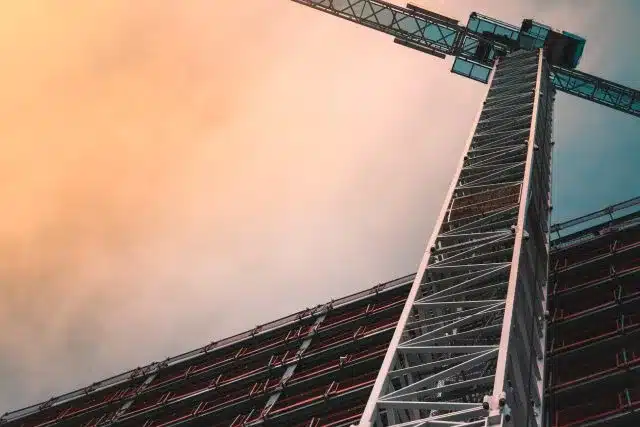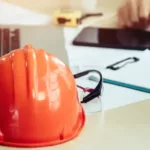10 Fall Protection Basics: What You Need to Know
The National Safety Stand-Down to Prevent Falls in Construction will be held May 1-5, 2023. This nationwide event will raise fall hazard awareness. There are several ways to participate in this National Safety Stand-Down, including holding a toolbox talk focused on fall prevention, scheduling a training session about fall protection, or conducting a safety inspection of your fall protection system. It is best to designate someone from your organization to plan and organize your Stand- Down ahead of time and get 100% participation from your team. You can also check www.osha.gov to see events in your area that are free and open to the public. Participation in this event shows a commitment to workplace safety and is an opportunity to ensure fall hazard risks are reduced or eliminated. No company is too small to participate. This week-long event spotlights the dangers of falls, but it is best safety practice to focus on fall protection all year.
Why should you focus on fall protection all year long?
Falls are a leading cause of workplace deaths, and fall protection is among the most frequently cited OSHA violations. In the construction industry, one in three deaths is from falls. Although workers in the construction industry are at high risk for falls, falls occur in other sectors as well. There is no room for error when a fall risk is present. Falls can occur from ladders, roofs, scaffolds, loading docks, stairways, and structural steel. Workers can fall through the floor openings or roof openings resulting in death, serious injuries, paralysis, broken bones, blunt trauma, and internal damage. Heat exposure can increase the risk of falls because heat affects balance and can slow reaction time. Younger (those under age 34) and older (over age 54) workers are the most at risk from falls. The reasons for falls are varied. Turnovers occur, and fall protection training is inadequate or didn’t happen. People get overconfident and complacent, and fall protection is not used. Planning didn’t happen, and things were forgotten. Fall protection systems were not adequately installed, used, or maintained. An inadequate safety program was in place or non-existent. Falls can be prevented, and it’s vital to protect your company’s people with relevant and ongoing fall protection training.
How can falls be prevented?
A focus on safety can help prevent falls. Protect your employees from safety hazards that lead to falls and require your workers to use fall protection. Fall protection is safety equipment used to make working at heights safer. Fall protection uses specially designed materials and equipment to prevent falls at your job site. Often, the equipment is a full body harness, fall arrest system, self- retracting lifelines (SRLs), and anchorage points to slow and catch a person in the event of a fall. Employees must know how to put a harness on and inspect equipment daily and before each use. Proper training is required. Employers must plan, provide the proper equipment, and train employees to prevent falls.
Reviewing your company’s fall protection program, safety policies, and goals is essential.
What are employers’ fall protection responsibilities?
Employers must set up their workplace to prevent employees from falling. A plan must be in place, and employers must provide the correct equipment. OSHA fall protection standards require fall protection training when workers are exposed to certain heights on the job. Training is a critical part of any fall protection plan. A lack of fall protection training is a top OSHA-cited violation. Employers must conduct fall hazard assessments and have written programs in place. Effective and documented training must be completed. Employers must provide fall protection systems and a fall protection-competent person. Employees must complete frequent inspections of fall protection equipment and systems. Developing a fall protection rescue plan is essential. Remember that more frequent safety training on fall protection is always better. Employees need reminders and follow-ups. The bottom line is that you must take care of your people and provide the necessary safety training, tools, and equipment to perform work at heights safely.
What are the consequences of workplace falls?
The consequences of falls are terrible. Falls can result in chronic pain, horrific injuries, paralysis, or death. It is heartbreaking to think of the individual who lost their life due to a fall on the job and the family who must deal with the consequences of their loved one not coming home. High medical costs and lost wages may create a financial strain on families. Workplace injuries can create emotional stress on families and devastate communities. Any workplace injury, including falls, will have a negative impact on a business. Aside from a diminished safety reputation, a company will see lower morale and decreased productivity.
Unfortunately, in our over 25 years in safety, we have had too many experiences with workplace fall fatalities, from investigating the accident to working as expert witnesses. Thinking of the real consequences drives home the point to work safety. It is crucial to emphasize fall protection and to focus on preventing another tragedy.
10 Fall Protection Basics:
- Plan the work so it can be done in the safest way possible. Have a fall prevention plan in place. Learn techniques to keep your workers safe. Is working from height necessary? Is there a safer way to do the work?
- Review your fall protection program. What needs improvement?
- Provide the right equipment. Do you have the appropriate tools and safety equipment to complete the work safely?
- Inspect equipment regularly. Check it often and replace equipment that could result in an injury. Follow the manufacturer’s guidelines and inspect the harness, lanyard, and anchorage point before each use.
- Train employees often. Ensure ongoing, effective fall protection training. Is your fall protection training program current, documented, and up-to-date?
- Choose the right fall protection system. Different fall protection equipment is available for different situations. Educate employees on selecting the proper equipment for each type of scenario. Familiarize yourself with OSHA standards for fall protection, ladders, and scaffolds.
- Review OSHA standards for fall protection. In addition to personal fall arrest systems, guardrails are also required depending on height. Guardrails remove the risk of falling by putting a barrier between the employee and the ends.
- Consider safer alternatives. Scaffolding, if set up correctly, can be a safer option. Conduct proper employee training on scaffolding.
- Protect holes, openings, and leading edges.
- Develop a rescue plan in case of a fall. Do you have a documented rescue plan? OSHA standards require this.
Understanding the dangers of falls on the job and their consequences is essential. With proper training and the correct equipment, falls can be prevented.
Emphasizing safety and fall protection training will help keep your employees safe. Protect your employees from safety hazards that lead to falls and require your workers to use fall protection.
We hope you will participate in the Safety Stand Down this month to highlight the dangers of falls. Don’t hesitate to contact us if you want more ideas about holding your Safety Stand-Down. We can assist with fall protection and would be glad to provide you with more information. Our fall protection training focuses on injury prevention and hazard recognition. We cover fall protection, ladder safety, competent person, scaffold safety, hazard communication, and falling hazards. Call us at 919-417-2139 or email for more detailed information about the OSHA standards related to fall protection and to learn how we can customize our fall protection courses for your industry.
Resources for the Stand Down:
OSHA has an events page with events free and open to the public. OSHA
https://www.osha.gov/stop-falls
CPWR-http://stopconstructionfalls.com
NIOSH- https://www.cdc.gov/niosh/construction/stopfallscampaign.html


